 |
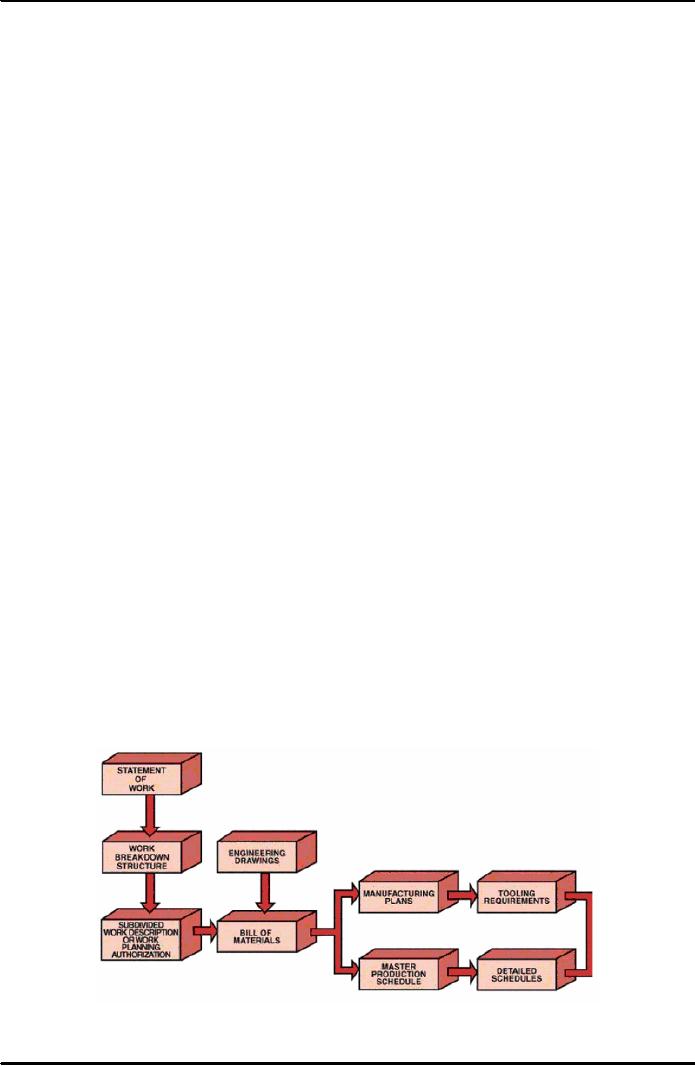
Project
Management MGMT627
VU
LESSON
33
PRICING
AND ESTIMATION (CONTD.)
BROAD
CONTENTS
Materials/Support
Costs
Pricing
out the Work
System
Pricing
Developing
the Supporting/Backup Costs
The
Low-Bidder Dilemma
Special
Problems
Estimating
Pitfalls
33.1
MATERIALS/SUPPORT
COSTS:
Three
of four major pricing input
requirements are fulfilled by the salary structure,
overhead
structure,
and labor hours. The fourth
major input is the cost for
materials and support. Six
subtopics
are included under
materials/support: materials, purchased
parts, subcontracts,
freight,
travel,
and other. Freight and travel
can be handled in one of two
ways, both normally
dependent
on the size of the program. For
small-dollar-volume programs, estimates
are made
for
travel and freight. For
large dollar-volume programs, travel is
normally expressed as
between
3 and 5 percent of the direct labor
costs, and freight is
likewise between 3 and 5
percent
of all costs for material,
purchased parts, and subcontracts.
The category labeled
"other
support
costs" may include such
topics as computer hours or special consultants.
Determination
of the material costs is very
time-consuming, more so than cost
determination for
labor
hours. Material costs are
submitted via a bill of materials
that includes all vendors
from
whom
purchases will be made,
projected costs throughout the
program, scrap factors, and
shelf
lifetime
for those products that may
be perishable.
As
depicted in the Figure 33.1
below, upon release of the
work statement, work
breakdown
structure,
and subdivided work description, the
end-item bill of materials and
manufacturing
plans
are prepared. End item materials
are those items identified as an
integral part of the
production
end-item. Support materials consist of
those materials required by engineering
and
operations
to support the manufacture of end-items, and are
identified on the manufacturing
plan.
Figure
33.1: Material
Planning Flow Chart
239
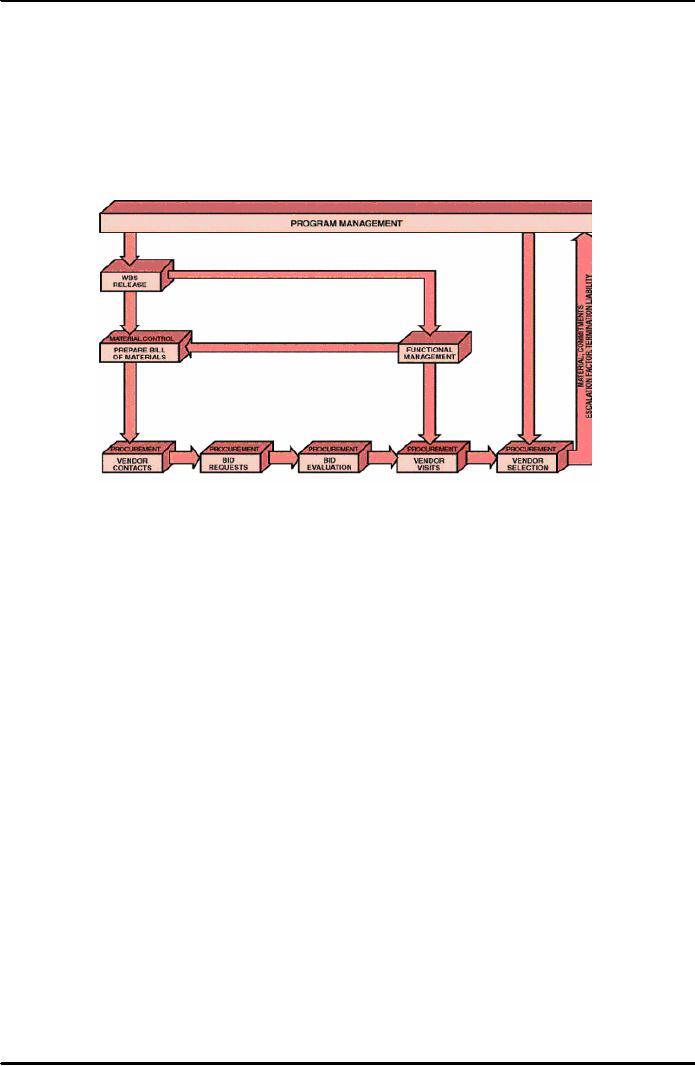
Project
Management MGMT627
VU
Furthermore,
a procurement plan/purchase requisition is prepared as
soon as possible after
contract
negotiations (using a methodology as
shown in Figure 33.2 below).
This plan is used to
monitor
material acquisitions, forecast
inventory levels, and
identify material price
variances.
Manufacturing
plans prepared upon release of the
subdivided work descriptions are
used to
prepare
tool lists for
manufacturing, quality assurance,
and engineering. From these
plans a
special
tooling breakdown is prepared by tool
engineering, which defines
those tools to be
procured
and the material requirements of tools to
be fabricated in-house. These items
are
priced
by cost element for input on the
planning charts.
Figure
33.2: Procurement
Activity
The
materials/support costs are
submitted by month for each
month of the program. If
long-lead
funding
of materials is anticipated, then they
should be as items must be applied to
all
materials/support
costs. Some vendors may
provide fixed prices over
time periods in excess of
a
twelve-month
period. As an example, vendor Z
may quote a firm-fixed price
of $130.50 per unit
for
650 units to be delivered
over the next eighteen
months if the order is placed within
sixty
days.
There are additional factors
that influence the cost of
materials.
33.2
PRICING
OUT THE WORK:
Note
that the logical pricing techniques
are available in order to
obtain detailed estimates.
The
following
thirteen steps provide a
logical sequence in order to
better control the
company's
limited
resources. These steps may
vary from company to
company.
Step
1: Provide
a complete definition of the work
Step
2: Establish a
logic network with
checkpoints.
Step
3: Develop
the work breakdown structure.
Step
4: Price
out the work breakdown
structure.
Step
5: Review
WBS costs with each
functional manager.
Step
6: Decide
on the basic course of
action.
Step
7: Establish
reasonable costs for each
WBS element.
Step
8: Review
the base case costs with
upper-level management.
Step
9: Negotiate
with functional managers for
qualified personnel.
Step
10: Develop
the linear responsibility chart.
Step
11: Develop
the final detailed and PERT/CPM
schedules.
Step
12: Establish
pricing cost summary reports.
Step
13: Document the
result in a program
plan.
240

Project
Management MGMT627
VU
Although
the pricing of a project is an iterative
process, the project manager
must still burden
himself
at each iteration point by
developing cost summary reports so
that key project
decisions
can
be made during the planning.
Detailed pricing summaries
are needed at least twice:
in
preparation
for the pricing review
meeting with management and at
pricing termination. At
all
other
times it is possible that ''simple
cosmetic surgery" can be
performed on previous
cost
summaries,
such as perturbations in escalation factors
and procurement cost of raw
materials.
The
list identified below shows
the typical pricing reports:
�
A
detailed cost breakdown for
each Work Breakdown Structure
(WBS) element. If the
work
is
priced out at the task
level, then there should be a
cost summary sheet for each
task, as
well
as rollup sheets for each
project and the total
program.
�
A
total program manpower curve
for each department. These
manpower curves show how
each
department has contracted with the
project office to supply
functional resources. If the
departmental
manpower curves contain several "peaks and
valleys," then the
project
manager
may have to alter some of
his schedules to obtain some
degree of manpower
smoothing.
Functional managers always
prefer manpower-smoothed resource
allocations.
�
A
monthly equivalent manpower
cost summary. This
table normally shows the
fully
burdened
cost for the average
departmental employee carried
out over the entire period
of
project
performance. If project costs have to be reduced, the
project manager performs a
parametric
study between this table and the manpower
curve tables.
�
A
yearly cost distribution
table. This
table is broken down by WBS
element and shows the
yearly
(or quarterly) costs that
will be required. This
table, in essence, is a project
cash-flow
summary
per activity.
�
A
functional cost and hour
summary. This
table provides top
management with an
overall
description
of how many hours and dollars
will be spent by each major
functional unit, such
as
a division. Top management
would use this as part of
the forward planning process
to
make
sure that there are
sufficient resources available
for all projects. This also
includes
indirect
hours and dollars.
�
Monthly
labor hour and dollar
expenditure forecast. This
table can be combined with
the
yearly
cost distribution, except that it is
broken down by month, not
activity or department.
In
addition, this table
normally includes manpower termination
liability information
for
premature
cancellation of the project by outside
customers.
�
A
raw material and expenditure
forecast. This
shows the cash flow for
raw materials based
on
vendor lead times, payment
schedules, commitments, and termination
liability.
�
Total
program termination liability
per month. This
table shows the customer the
monthly
costs
for the entire program. This
is the customer's cash flow,
not the contractor's. The
difference
is that each monthly cost
contains the termination liability for
man-hours and
dollars,
on labor and raw materials. This
table is actually the monthly
costs attributed to
premature
project termination.
It
is important to note that
these tables are used by
both project managers and
upper-level
executives.
The project managers utilize
these tables as the basis
for project cost control.
Top-
level
management utilizes them for selecting,
approving, and prioritizing
projects.
33.3
SYSTEMS
PRICING:
The
basis of successful program
management is the establishment of an accurate
cost package
from
which all members of the
organization can both
project and track costs. The
cost data must
241
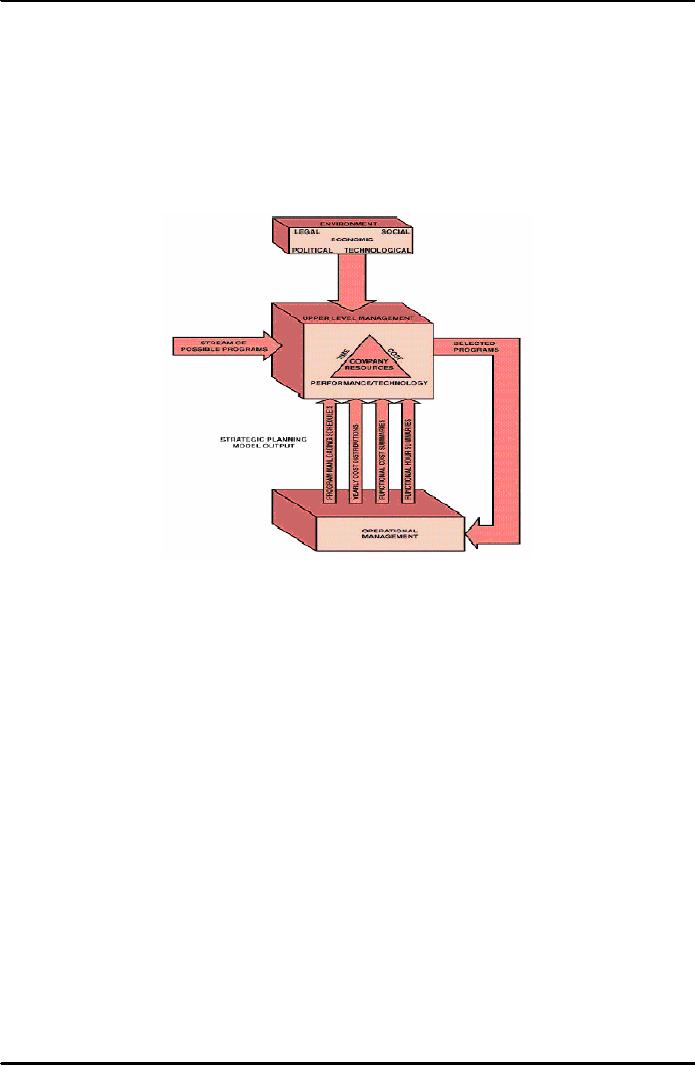
Project
Management MGMT627
VU
be
represented in such a manner
that maximum allocation of the corporate
resources of people,
money,
and facilities can be achieved.
In
addition, the systems approach to pricing
out the activity schedules
and the work
breakdown
structure
provides a means for
obtaining unity within the
company. The flow of
information
readily
admits the participation of all members
of the organization in the program, even if on
a
part-time
basis.
Functional
managers obtain a better understanding of
how their labor fits
into the total
program
and
how their activities
interface with those of
other departments. For the
first time,
functional
managers
can accurately foresee how
their activity can lead to
corporate profits.
Figure
33.3: System
Approach to Resource
Control
As
shown in Figure 33.3 above the project
pricing model (sometimes
called a strategic project
planning
model) acts as a management
information system, forming the
basis for the systems
approach
to resource control. The
summary sheets from the computer
output of the strategic
pricing
model provide management
with the necessary data from
which the selection of possible
programs
can be made so that maximum
utilization of resources will
follow.
The
strategic pricing model also
provides management with an
invaluable tool for
performing
perturbation
analysis on the base case costs.
This perturbation analysis provides
management
with
sufficient opportunity for design and
evaluation of contingency plans, should a
deviation
from
the original plan be
required.
33.4
DEVELOPING
THE SUPPORTING/BACKUP
COSTS:
Remember
that not all cost
proposals require backup support,
but for those that
do, the backup
support
should be developed along
with the pricing. Extreme
caution must be exercised to
make
sure
that the itemized prices are
compatible with the supporting
data. Government
pricing
requirements
are a special case.
Most
supporting data come from
external (subcontractor or outside
vendor) quotes. Internal
data
must
be based on historical data, and
these historical data must
be updated continually as each
new
project is completed. The supporting
data should be traceable by itemized
charge numbers.
It
must be kept in mind that
customers may wish to audit
the cost proposal. In this
case, the
starting
point might be with the
supporting data. It is not uncommon on
sole-source proposals to
have
the supporting data audited
before the final cost
proposal is submitted to the
customer.
242
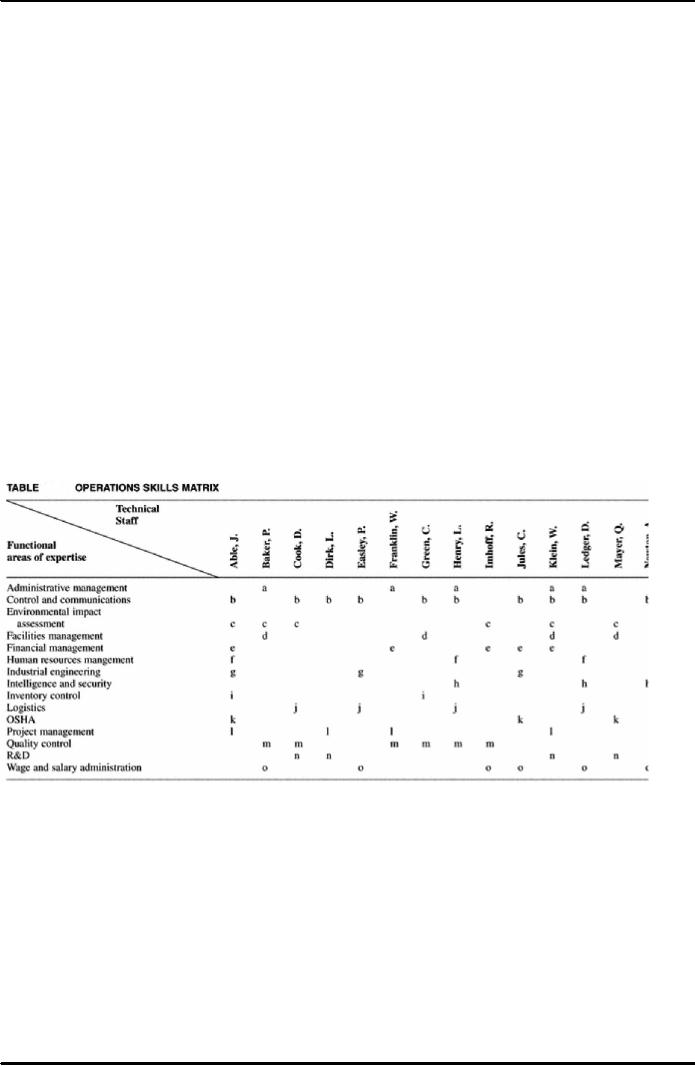
Project
Management MGMT627
VU
Not
all cost proposals require
supporting data; the determining factor
is usually the type of
contract.
On a fixed-price effort, the customer
may not have the right to
audit your books.
However,
for a cost-reimbursable package, your
costs are an open book, and
the customer
usually
compares your exact costs to
those of the backup support.
Commonly,
most companies usually have a choice of
more than one estimate to be
used for
backup
support. In deciding which estimate to
use, consideration must be
given to the
possibility
of follow-on work:
�
If
your actual costs grossly exceed
your backup support estimates,
you may lose
credibility
for
follow-on work.
�
If
your actual costs are less
than the backup costs, you
must use the new actual
costs on
follow-on
efforts.
We
see that the moral here is
that backup support costs
provide future credibility. If
you have
well-documented,
"livable" cost estimates,
then you may wish to
include them in the cost
proposal
even if they are not
required.
Since
both direct and indirect
costs may be negotiated separately as
part of a contract,
supporting
data such as those in the
following four Tables (33.1,
33.2, 33.3 and 33.4
respectively)
and Figure 33.4 following
them may be necessary to justify
any costs that
may
differ
from company (or customer-approved)
standards.
243
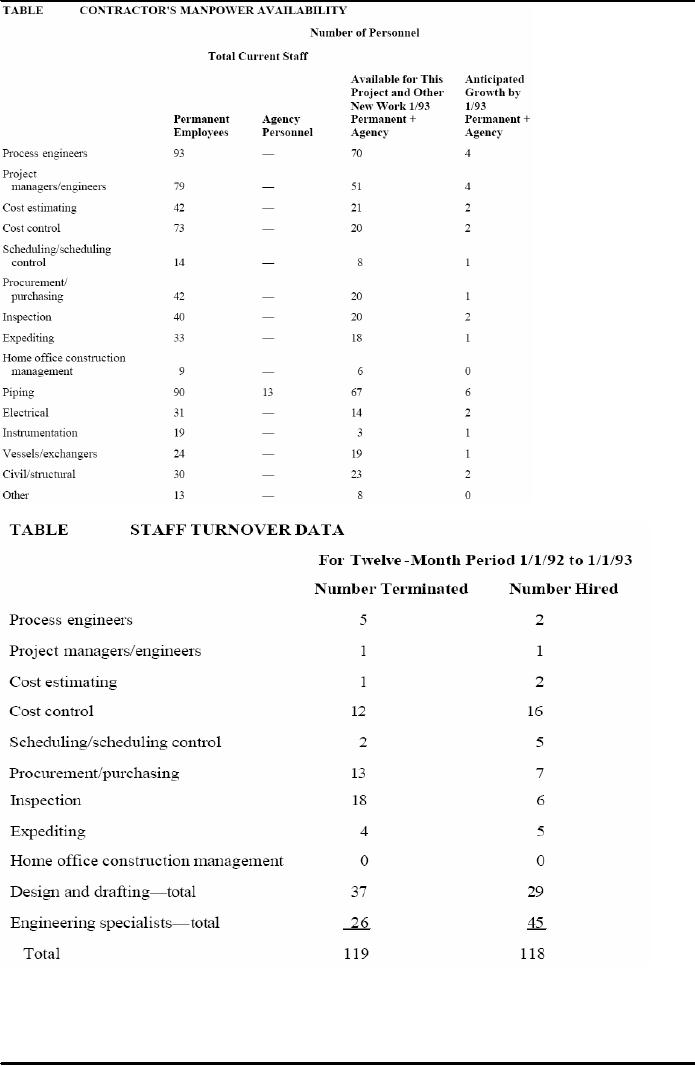
Project
Management MGMT627
VU
Tables
33.1 and 33.2
Table
33.3: Staff
Turnover Data
244
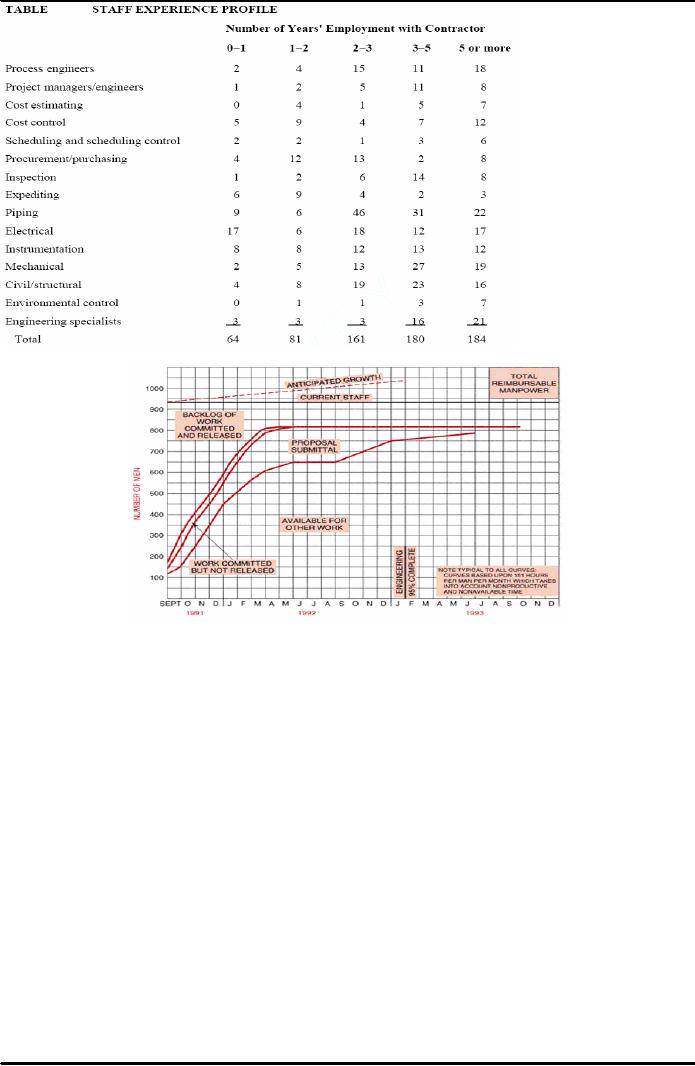
Project
Management MGMT627
VU
Table
33.4: Staff
Experience Profile
Figure
33.4: Total
Reimbursable Manpower
33.5
THE
LOW-BIDDER DILEMMA:
There
is little argument about the importance
of the price tag to the proposal. The
question is
what
price will win the job?
Everyone has an answer to
this question. The decision
process that
leads
to the final price of your
proposal is highly complex
with many uncertainties.
Yet
proposal
managers, driven by the desire to
win the job, may
think that a very
low-priced
proposal
will help. But, hopefully,
winning is only the beginning.
Companies have short-
and
long-range
objectives on profit, market
penetration, new product
development, and so on.
These
objectives
may be incompatible with or
irrelevant to a low-price strategy per
se; for example:
�
A
suspiciously low price,
particularly on cost-plus type proposals,
might be perceived by
the
customer as unrealistic, thus
affecting the bidder's cost credibility
or even the technical
ability
to perform.
�
The
bid price may be unnecessarily
low, relative to the competition
and customer budget,
thus
eroding profits.
�
The
price may be irrelevant to the
bid objective, such as
entering a new market.
Therefore,
the
contractor has to sell the proposal in a
credible way, e.g., using
cost sharing.
245

Project
Management MGMT627
VU
�
Low
pricing without market
information is meaningless. The
price level is always
relative
to
(1) the competitive prices, (2) the
customer budget and (3) the bidder's
cost estimate.
�
The
bid proposal and its price
may cover only part of the
total program. The ability
to win
phase
II or follow-on business depends on
phase I performance and phase II
price.
�
The
financial objectives of the customer
may be more complex than
just finding the
lowest
bidder.
They
may include cost objectives
for total system life-cycle
cost (LCC), for
design
to unit
production
cost (DTUPC), or
for specific logistic support items.
Presenting sound approaches
for
attaining these system
costperformance parameters and
targets may be just as
important as,
if
not more important than, a
low bid for the system's
development.
In
addition to this, it is refreshing to
note that in spite of customer
pressures toward low cost
and
fixed
price, the lowest bidder is
certainly not an automatic
winner. Both commercial and
governmental
customers are increasingly
concerned about cost realism
and the ability to
perform
under contract. A compliant, sound,
technical and management proposal,
based on past
experience
with realistic, well documented
cost figures, is often
chosen over the lowest
bidder,
who
may project a risky image
regarding technical performance, cost, or
schedule.
33.6
SPECIAL
PROBLEMS:
It
is essential to note that there
are always special problems that,
although often
overlooked,
have
a severe impact on the pricing
effort. As an example, pricing
must include an
understanding
of cost control-- specifically,
how costs are billed back to
the project. There
are
three
possible situations:
1.
Work
is priced out at the department average,
and all work performed is
charged to the
project
at the department average salary, regardless of
who accomplished the work. This
technique
is obviously the easiest, but
encourages project managers to
fight for the highest
salary
resources, since only
average wages are billed to
the project.
2.
Work
is priced out at the department average,
but all work performed is
billed back to the
project
at the actual salary of those
employees who perform the
work. This
method can
create
a severe headache for the
project manager if he tries to use
only the best employees
on
his project. If these employees
are earning substantially more
money than the department
average,
then a cost overrun will
occur unless the employees can
perform the work in
less
time.
Some companies are forced to
use this method by government
agencies and have
estimating
problems when the project that
has to be priced out is of a short
duration where
only
the higher-salaried employees can be
used. In such a situation it is common to
''inflate"
the
direct labor hours to compensate
for the added costs.
3.
The
work is priced out at the
actual salary of those
employees who will perform the
work,
and
the cost is billed back the
same way. This
method is the ideal situation as long as
the
people
can be identified during the
pricing effort.
In
this regard, some companies
use a combination of all three
methods. In this case, the
project
office
is priced out using the
third method (because these
people are identified
early), whereas
the
functional employees are priced
out using the first or
second method.
33.7
ESTIMATING
PITFALLS:
There
are several pitfalls that
can impede the pricing
function. Probably the most
serious pitfall,
and
the one that is usually
beyond the control of the project
manager, is the "buy-in" decision,
which
is based on the assumption that there
will be "bail-out" changes or
follow-on contracts
later.
These changes and/or
contracts may be for spares,
spare parts, maintenance,
maintenance
246

Project
Management MGMT627
VU
manuals,
equipment surveillance, optional
equipment, optional services, and
scrap factors.
Other
types of estimating pitfalls
include:
�
Misinterpretation
of the statement of work
�
Omissions
or improperly defined
scope
�
Poorly
defined or overly optimistic
schedule
�
Inaccurate
work breakdown structure
�
Applying
improper skill levels to
tasks
�
Failure
to account for risks
�
Failure
to understand or account for cost
escalation and inflation
�
Failure
to use the correct estimating
technique
�
Failure
to use forward pricing rates
for overhead, general and administrative, and
indirect
costs.
Unfortunately,
many of these pitfalls do
not become evident until
detected by the cost
control
system,
well into the
project.
247
Table of Contents:
- INTRODUCTION TO PROJECT MANAGEMENT:Broad Contents, Functions of Management
- CONCEPTS, DEFINITIONS AND NATURE OF PROJECTS:Why Projects are initiated?, Project Participants
- CONCEPTS OF PROJECT MANAGEMENT:THE PROJECT MANAGEMENT SYSTEM, Managerial Skills
- PROJECT MANAGEMENT METHODOLOGIES AND ORGANIZATIONAL STRUCTURES:Systems, Programs, and Projects
- PROJECT LIFE CYCLES:Conceptual Phase, Implementation Phase, Engineering Project
- THE PROJECT MANAGER:Team Building Skills, Conflict Resolution Skills, Organizing
- THE PROJECT MANAGER (CONTD.):Project Champions, Project Authority Breakdown
- PROJECT CONCEPTION AND PROJECT FEASIBILITY:Feasibility Analysis
- PROJECT FEASIBILITY (CONTD.):Scope of Feasibility Analysis, Project Impacts
- PROJECT FEASIBILITY (CONTD.):Operations and Production, Sales and Marketing
- PROJECT SELECTION:Modeling, The Operating Necessity, The Competitive Necessity
- PROJECT SELECTION (CONTD.):Payback Period, Internal Rate of Return (IRR)
- PROJECT PROPOSAL:Preparation for Future Proposal, Proposal Effort
- PROJECT PROPOSAL (CONTD.):Background on the Opportunity, Costs, Resources Required
- PROJECT PLANNING:Planning of Execution, Operations, Installation and Use
- PROJECT PLANNING (CONTD.):Outside Clients, Quality Control Planning
- PROJECT PLANNING (CONTD.):Elements of a Project Plan, Potential Problems
- PROJECT PLANNING (CONTD.):Sorting Out Project, Project Mission, Categories of Planning
- PROJECT PLANNING (CONTD.):Identifying Strategic Project Variables, Competitive Resources
- PROJECT PLANNING (CONTD.):Responsibilities of Key Players, Line manager will define
- PROJECT PLANNING (CONTD.):The Statement of Work (Sow)
- WORK BREAKDOWN STRUCTURE:Characteristics of Work Package
- WORK BREAKDOWN STRUCTURE:Why Do Plans Fail?
- SCHEDULES AND CHARTS:Master Production Scheduling, Program Plan
- TOTAL PROJECT PLANNING:Management Control, Project Fast-Tracking
- PROJECT SCOPE MANAGEMENT:Why is Scope Important?, Scope Management Plan
- PROJECT SCOPE MANAGEMENT:Project Scope Definition, Scope Change Control
- NETWORK SCHEDULING TECHNIQUES:Historical Evolution of Networks, Dummy Activities
- NETWORK SCHEDULING TECHNIQUES:Slack Time Calculation, Network Re-planning
- NETWORK SCHEDULING TECHNIQUES:Total PERT/CPM Planning, PERT/CPM Problem Areas
- PRICING AND ESTIMATION:GLOBAL PRICING STRATEGIES, TYPES OF ESTIMATES
- PRICING AND ESTIMATION (CONTD.):LABOR DISTRIBUTIONS, OVERHEAD RATES
- PRICING AND ESTIMATION (CONTD.):MATERIALS/SUPPORT COSTS, PRICING OUT THE WORK
- QUALITY IN PROJECT MANAGEMENT:Value-Based Perspective, Customer-Driven Quality
- QUALITY IN PROJECT MANAGEMENT (CONTD.):Total Quality Management
- PRINCIPLES OF TOTAL QUALITY:EMPOWERMENT, COST OF QUALITY
- CUSTOMER FOCUSED PROJECT MANAGEMENT:Threshold Attributes
- QUALITY IMPROVEMENT TOOLS:Data Tables, Identify the problem, Random method
- PROJECT EFFECTIVENESS THROUGH ENHANCED PRODUCTIVITY:Messages of Productivity, Productivity Improvement
- COST MANAGEMENT AND CONTROL IN PROJECTS:Project benefits, Understanding Control
- COST MANAGEMENT AND CONTROL IN PROJECTS:Variance, Depreciation
- PROJECT MANAGEMENT THROUGH LEADERSHIP:The Tasks of Leadership, The Job of a Leader
- COMMUNICATION IN THE PROJECT MANAGEMENT:Cost of Correspondence, CHANNEL
- PROJECT RISK MANAGEMENT:Components of Risk, Categories of Risk, Risk Planning
- PROJECT PROCUREMENT, CONTRACT MANAGEMENT, AND ETHICS IN PROJECT MANAGEMENT:Procurement Cycles